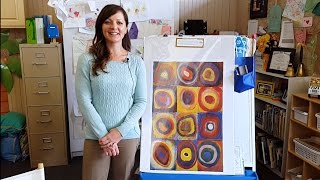Ideas for Teaching Colors
Amanda Leger | Wichita Collegiate School | Wichita, Kansas
Students learn colors by observing the physical objects around them including crayons, their own clothes, and other items in the room. The teacher says the name of color and repeats it each time an object is identified.
Read Transcript
When teaching colors to young kids, I always like to help them make associations with the color. It can be as easy as just having the crayon. So today we’re learning the color red. The kids look at the color red. And I ask them to look at their clothes. Look down. Am I wearing red? If the kids are wearing red, they can stand up, and we can go around the circle and share who has red socks on, or red shirts, or red shoes, or red bows in their hair. But I keep continually saying red. If it’s just as simple as the crayon keep it that way. But I also like to have the kids go around the room and find red objects. I found a red fluff. I found a red hat. I found a red apple. Continuing to say the color red. They associate the color with the object. I found a red wagon. I also enjoy having pictures up in the classroom, so they can see this is red. And as the learning continues, they start to recognize the letters of the color and how to spell the color. And then, add a bonus. Add another language. So red in English, rojo in Spanish. One of my kids’ favorite songs is a book that was created from a teacher long ago called, “Crazy Color Creatures.” I have the kids come up to my easel, and they’ll point to the color and say what color is it? Coral response, the color is red. Then the song goes, Fred red bumped his head, Fred red bumped his head, Fred red bumped his head, crazy color creatures. That way it’s a fun association again with the color.
Help teachers and children
worldwide by sharing how
you teach.
A global movement of people sharing knowledge and learning from each other, to better educate our children and create hope for the world.
A global movement of people sharing knowledge and learning from each other, to better educate our children and create hope for the world.






